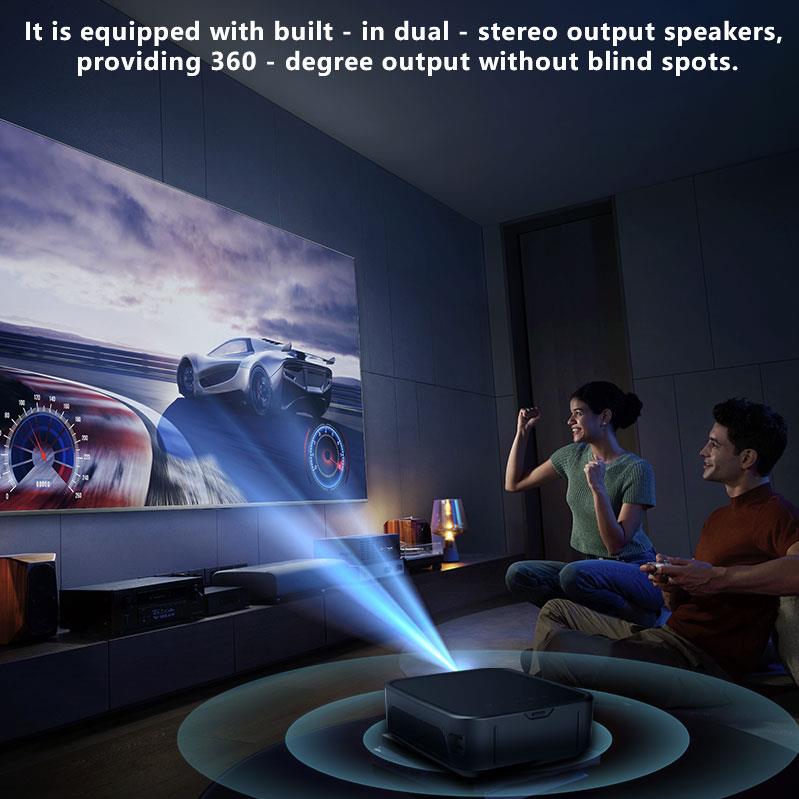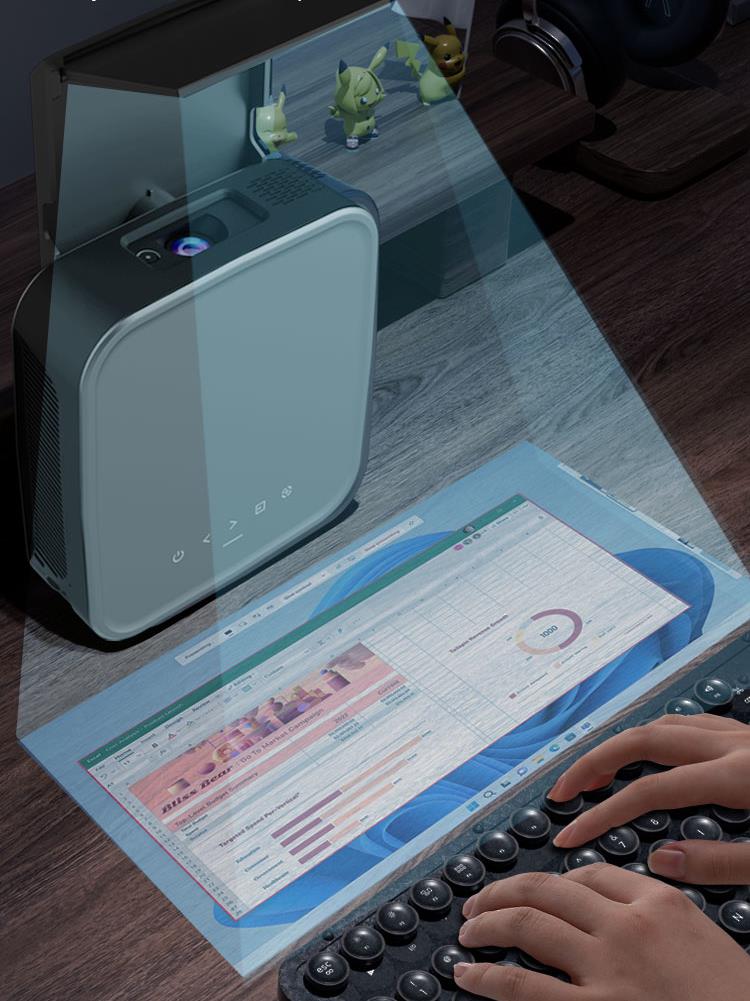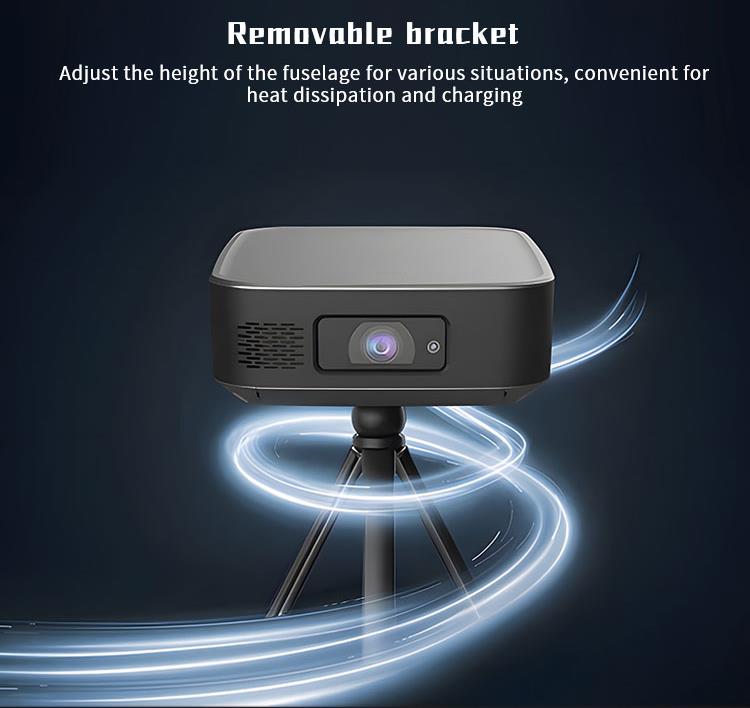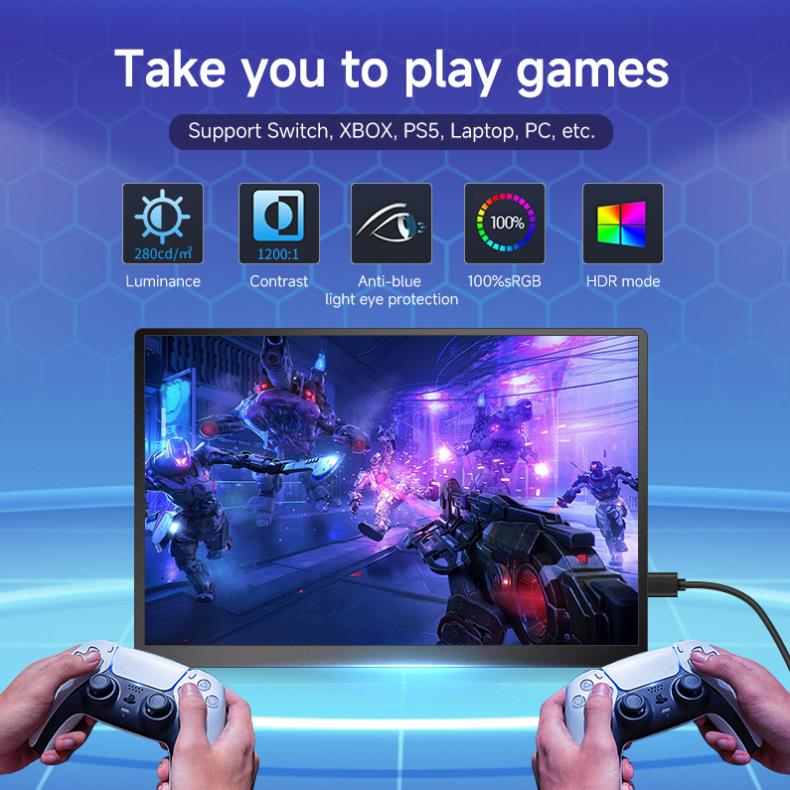- Select Language
One Device, Dual Functions – A Projector and a Com...
The U9000 handheld PDA combines advanced barcode s...
Deep Light Processing (DLP) is one of the most popular projection technologies today, used in everything from pocket-sized portable projectors to professional cinema systems. This article provides an in-depth, original, and technically accurate explanation of how DLP projectors work, focusing on the DLP chip (DMD), the color wheel and color generation, and modern light sources (LED and laser). If you're researching a projector, this article will explain the principles and their advantages and disadvantages.

1. The Heart of DLP: The DMD (Digital Micromirror Device)
At the heart of every single-chip DLP projector is the DMD—a silicon chip manufactured by Texas Instruments (TI) that contains an array of micromirrors. Each micromirror corresponds to a single image pixel.
Key DMD Information:
Micromirrors = pixels. A DMD with 1920×1080 micromirrors enables a projector with 1080p resolution; 3840×2160 mirrors enable native 4K DLP image quality.
Physical Structure. Each mirror is mounted on a tiny hinge that can tilt between two states (typically ±10–12°, depending on the DMD version). The tilt of the mirror directs light toward the lens (on) or toward the light output (off).
Electrostatic Actuation. The mirrors are driven by electrostatic forces generated by underlying memory cells on the CMOS substrate. Electronics select which mirror to turn on or off for each frame.
Reliability. DMD mirrors are extremely durable—designed to withstand billions of state changes—which helps explain why DLP projectors are typically low-maintenance and have long lifespans.
How Grayscale (Brightness Levels) is Generated
The mirrors are binary (on/off), but projectors must display thousands of grayscale levels. DLP achieves grayscale through temporal modulation:
The mirrors switch between on and off multiple times per video frame.
The relative proportion of time the mirrors are in the on state (pulse-width modulation) determines the perceived brightness of that pixel.
Because the flips occur so frequently, the eye/brain integrates these pulses into a continuous stream of tones. This temporal approach is precisely why DLP excels at handling moving images—the micromirrors switch extremely quickly, resulting in very low motion blur and latency.
2. Color Generation: Color Wheel vs. Color Sequential Illumination
Single-Chip DLP + Color Wheel (Traditional Consumer Approach)
Most consumer-grade single-chip DLP projectors use color sequential projection:
A white light source (a lamp or broad-spectrum LED/laser phosphor) shines onto a rotating color wheel containing red, green, and blue segments (and sometimes also cyan, magenta, yellow, or clear segments).
As the color wheel rotates, only one primary color illuminates the DMD at any given moment.
The DMD displays the corresponding color component at that moment by turning the micromirrors on or off.
These rapid red→green→blue sequences are synchronized with the mirror modulation so the eye can integrate them into a full-color image
Advantages: Simpler and less expensive than multi-chip systems; compact optical path. Disadvantages: If the color wheel speed or synchronization is slow, some viewers may experience a "rainbow effect"—a brief flash of color along high-contrast edges when the eye tracks the motion. Higher color wheel speeds, more color segments, or different color sequencing can reduce this effect.
LED and RGB Laser Approaches (No Color Wheel Color Sorting)
Modern projectors increasingly use LED arrays or RGB lasers instead of white light bulbs and color wheels:
RGB LEDs: Independent red, green, and blue LEDs are timed to produce sequential frames of color. No rotating color wheel is required.
RGB Lasers: Individual red, green, and blue lasers can be modulated to produce color; this provides the widest color gamut and the best intensity control.
Blue Laser + Phosphor (Laser-Phosphor): A blue laser excites a phosphor to produce yellow/white light; a color management system then creates the perceived color image. This approach is cost-effective and offers high brightness, but pure RGB lasers offer a wider color gamut.
Advantages of LED/Laser Color Engines:
No mechanical color wheel required → Fewer moving parts, lower probability of color dispersion. Faster color switching and typically a wider color gamut.
Lower maintenance costs and longer light engine life.
Three-Chip DLP (Professional/Cinema)
High-end and cinema projectors use three separate DMD chips, one for each primary color. The light path passes through a dichroic mirror, separating the incoming light into red, green, and blue channels; each channel has its own DMD. Because each color is produced simultaneously on its own chip:
No color dispersion occurs.
Higher color accuracy and brightness.
These systems are larger and more expensive and are typically used in digital cinemas and high-end venues.

3. Light Source Technology: Lamp, LED, Laser (and Laser Phosphor)
DMDs require a light source. Over time, projection light engines have shifted from lamps to LEDs and lasers. Each approach presents unique performance and cost trade-offs.
Traditional UHP/Metal Halide Lamps
Advantages: Historically high brightness and relatively low cost for consumer products.
Disadvantages: Short lifespan (a few thousand hours), maintenance (lamp replacement), color change as the lamp ages, heat generation.
LED (Light Emitting Diode)
How it works: Uses an array of red, green, and blue LEDs, which can be used individually or in combination. Some LED projectors still use a color wheel, but many employ sequential LED modulation.
Advantages: Long lifespan (10,000 to 30,000 hours), excellent color stability, low heat, instant on/off, compact form factor.
Disadvantages: Lower peak brightness compared to similarly priced laser projectors (suitable for dark rooms and portable projectors).
Laser Projectors (Including Laser Phosphor)
RGB Laser Projectors: Direct red, green, and blue laser projectors—optimal color gamut, high brightness, and fast modulation speed.
Blue Laser Projectors + Phosphor: More affordable and widely used; the blue laser excites a phosphor wheel/plate to produce white light, which is then filtered/managed. They offer excellent brightness and lifespan, and are less expensive than RGB laser projectors.
Advantages (Laser Series): High brightness (suitable for large venues), long life (20,000 to 30,000+ hours), excellent color performance (especially RGB lasers), and long-term stable light output.
Disadvantages: RGB lasers are more expensive; laser safety and speckle issues may require consideration in some setups (speckle can be reduced using optical technology).
4. Complete Imaging Path (How All Components Fit Together)
The following is a simplified imaging process for a typical single-chip DLP projector:
The light source (lamp/RGB LED/laser or laser phosphor) produces a bright beam.
Color Modulation: The light passes through a color wheel (or sequentially generated by an LED/laser).
DMD/DLP Chip: Mirrors rapidly tilt to create pixel-level brightness for each color subframe.
Projection Optics: Lenses focus and scale the modulated light to form an image on the screen.
Keystone Correction and Image Processing: Electronics perform geometric correction, scaling, and color management before final projection. In a three-chip DLP projector, light is split into RGB paths before reaching the three DMDs, where it is then optically recombined, eliminating the need for sequential color.
5. Common Artifacts and How Modern Designs Mitigate These Issues
Rainbow Effect (Color Breakup): Caused by single-chip sequential color systems and slow color wheel speeds. Mitigations include increasing color wheel speed, adding more color segments, using an LED/laser color engine, or adopting a three-chip design.
Speckle: Laser light sources (especially RGB light sources) can produce speckle under certain viewing conditions. Manufacturers use diffusers, vibration, or multimode lasers to reduce visible speckle.
Motion Blur/Latency: DLP's micromirrors switch very quickly, resulting in low motion blur and input lag (ideal for gaming).
Dust and Maintenance: Many DLP projectors use sealed optical engines (fewer optical components exposed to air), resulting in increased durability and lower maintenance requirements than some alternatives.

6. Advanced Topics: Pixel Shifting, XPR, and "4K" DLP
True native 4K DMDs exist, but some consumer projectors use pixel shifting technology (often called XPR or dithering) to create a 4K-equivalent image from a 1080p DMD:
Subframes displayed by the DMD are rapidly shifted at a sub-pixel rate; the human eye integrates these subframes, perceiving a higher apparent resolution.
This technology enables manufacturers to deliver near-4K detail using low-cost DMDs; however, true native 4K DMDs typically deliver the best original detail.
7. DLP vs. Other Projection Technologies (Brief)
DLP vs. LCD: DLP generally offers sharper dynamic range and higher contrast; LCD can offer higher native color saturation in certain designs. LCD projectors are less prone to the "screen door" effect. DLP vs. LCoS: LCoS (LCOS) offers excellent color and smooth gradients (used in Sony and some high-end projectors), but is larger and more expensive.
Why choose DLP: Compact, reliable, fast motion processing, and the option of a three-chip theater system.
8. Practical Purchasing Considerations (What to Check on the Spec Sheet)
If you're shopping for a DLP projector, pay attention to the following:
Native resolution (1080p vs. native 4K) and whether pixel shifting technology is used.
Brightness relative to your viewing environment (ANSI lumens).
Light source type: LED, laser phosphor, or RGB laser—balancing brightness, color gamut, and lifespan.
Contrast ratio and black level handling.
Color gamut/HDR support (Rec. 709, DCI-P3, HDR10).
If gaming is important, consider input lag.
If mounting distance is limited, support for throw ratio/UST.
Connectivity: HDMI 2.1/2.0, USB-C, wireless projection, and audio output.
Sealed optical engine (suitable for dusty environments) and rated operating time.

9. Summary: Why DLP Still Matters
DLP is a mature and versatile projection architecture that scales from pocket projectors to cinemas. Its unique micromirror array (DMD) enables extremely fast, reliable imaging with excellent motion handling capabilities. When paired with a modern LED or laser light engine, DLP projectors deliver bright, color-accurate images with minimal maintenance. Understanding the DMD, color generation methods (color wheel vs. LED/laser), and light engine selection can provide insight into projector capabilities and help you choose the right one.